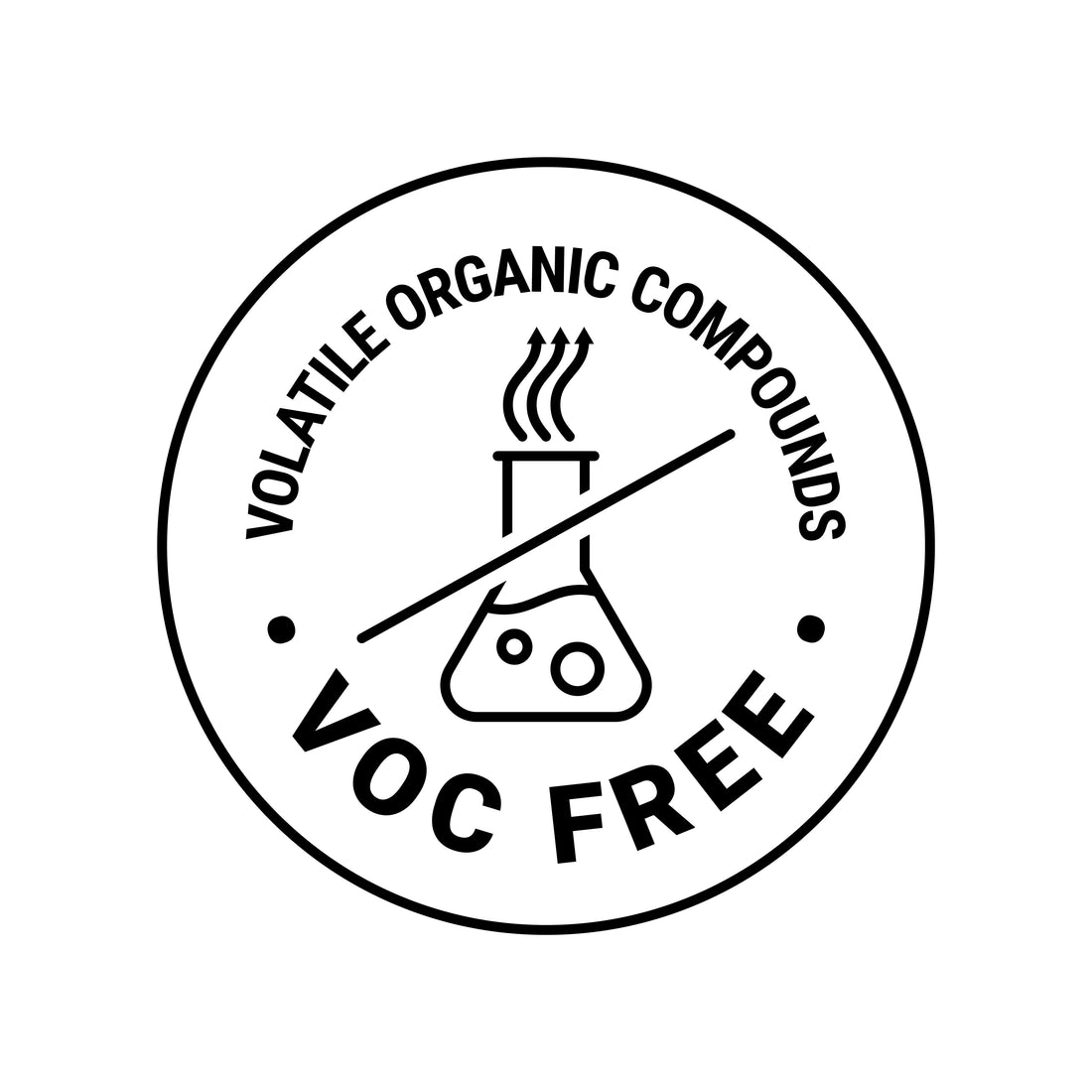
What is low- VOC and 7 key ways VOCs affect interior design
Share
Low-VOC refers to products that emit low levels of volatile organic compounds (VOCs). VOCs are chemicals that easily vaporize at room temperature and harm indoor air quality and human health. Here's what low VOC means in different contexts:
Definition
Volatile Organic Compounds (VOCs): These are organic chemicals with a high vapor pressure at ordinary room temperature, which causes them to evaporate and enter the air. Common examples include formaldehyde, benzene, and toluene.
Health and Environmental Impact
Health Risks: High levels of VOCs can cause a variety of health issues, including headaches, dizziness, respiratory problems, allergic reactions, and, in some cases, more severe conditions like cancer.
Environmental Impact: VOCs contribute to ground-level ozone and smog formation, which harm the environment and human health.
Low-VOC Products
Paints and Finishes: Low-VOC paints and finishes are formulated to emit fewer VOCs than traditional products. They are less likely to cause indoor air pollution and are safer for enclosed spaces.
Adhesives and Sealants: These products are used in construction and manufacturing, and low-VOC versions help reduce the overall VOC emissions in buildings.
Furnishings and Building Materials: Low-VOC materials can be used to make items like carpets, flooring, furniture, and insulation, which can improve indoor air quality.
Benefits of Low-VOC Products
Improved Indoor Air Quality: Reducing VOC emissions helps maintain healthier air in homes, offices, and other indoor environments.
Reduced Health Risks: Lower exposure to harmful chemicals decreases the risk of acute and chronic health issues.
Environmental Benefits: Using low-VOC products reduces pollution and supports sustainability efforts.
Standards and Certifications
Regulatory Standards: Different regions have regulations and standards for acceptable levels of VOCs in products. For example, the Environmental Protection Agency (EPA) in the U.S. sets guidelines for VOC content in various products.
Certifications: Several third-party certifications indicate compliance with low-VOC standards, such as GREENGUARD, LEED, and Green Seal. These certifications help consumers identify products that meet stringent environmental and health criteria.
Individuals and businesses can contribute to healthier living and working environments by choosing low-VOC products while supporting broader environmental sustainability efforts.

Volatile Organic Compounds (VOCs) significantly impact interior design in various ways. Understanding these impacts helps designers make informed choices that enhance indoor air quality, ensure the health and well-being of occupants, and create sustainable spaces. Here are the key ways VOCs affect interior design:
Material Selection
-
Low-VOC Materials: Designers increasingly opt for low-VOC or VOC-free materials, such as paints, adhesives, sealants, and finishes. This reduces the emission of harmful gases into the indoor environment.
-
Natural and Eco-Friendly Materials: There is a growing trend towards using natural materials like wood, bamboo, and cork, which typically have lower VOC emissions than synthetic alternatives.
Indoor Air Quality
-
Ventilation Systems: Effective ventilation systems are crucial in interior design to manage and reduce VOC concentrations. Designers may integrate mechanical ventilation, air purifiers, and strategic window placements to enhance airflow.
-
Plants: Incorporating indoor plants can help reduce VOC levels, as certain plants are known to absorb these compounds and improve air quality.
Health and Well-Being
-
Ergonomic and Safe Environments: Design strategies now prioritize the health and well-being of occupants. This includes creating spaces that minimize exposure to VOCs, thus reducing the risk of respiratory issues, headaches, and other health problems.
-
Certification Standards: Many interior designers adhere to standards and certifications such as LEED (Leadership in Energy and Environmental Design) or WELL Building Standard, which emphasize low-VOC materials and healthy indoor environments.
Sustainability
-
Sustainable Practices: Using low-VOC materials is part of broader sustainable design practices. Sustainable design aims to reduce environmental impact, and minimizing VOC emissions is essential to this goal.
-
Lifecycle Analysis: Designers often conduct lifecycle analyses of materials to understand their environmental impact from production to disposal, ensuring they select materials with minimal VOC emissions throughout their lifecycle.
Aesthetic and Functional Design
Finishes and Furnishings: VOC considerations influence the choice of finishes and furnishings. Designers may select low-VOC options that do not compromise aesthetic appeal or functionality.
-
Innovation in Materials: The demand for low-VOC products has led to innovation in material science, providing designers with new, high-performance, safe, and aesthetically pleasing materials.
Regulations and Standards
-
Compliance: Designers must be aware of local and international regulations regarding VOC emissions. Compliance with these regulations ensures that interior spaces are safe and healthy for occupants.
-
Building Codes: Many building codes now include requirements for low-VOC materials, influencing the choices designers make during the planning and execution of interior projects.
Cost Implications
-
Cost-Benefit Analysis: While low-VOC materials can sometimes be more expensive, designers conduct cost-benefit analyses to weigh the initial investment against long-term health benefits and potential savings on healthcare costs and productivity gains.
In summary, VOCs play a crucial role in interior design, driving the selection of materials, design strategies, and practices that prioritize health, sustainability, and compliance with regulations. By reducing VOC emissions, designers can create safer, healthier, and more sustainable indoor environments, along with biophilic design elements.
